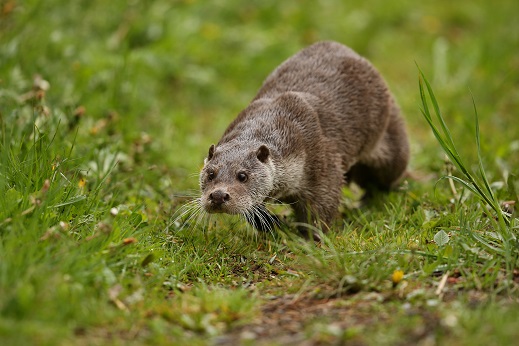Animals grace our planet in diverse forms, each with unique charm and characteristics. Groundhogs stand out for their burrowing lifestyle and quirky tradition of predicting the weather on Groundhog Day. However, other creatures share striking similarities with these furry meteorologists. Let’s embark on a journey to explore “Animals that Look Like Groundhogs” and unravel the fascinating world of these groundhog doppelgangers.
Table of Contents
ToggleWhat is a Groundhog?
Groundhogs, also known as woodchucks, belong to the marmot family and are primarily found in North America. Known for their plump bodies and short legs, groundhogs are adept burrowers, creating intricate tunnel systems. Beyond their biology, they gained fame for their role in predicting the arrival of spring through the annual tradition of Groundhog Day.
Animals with Groundhog-Like Features
While groundhogs have a unique charm, several other animals share features that make you double-take. Let’s delve into five intriguing creatures that could easily be mistaken for groundhogs.
Prairie Dogs: Cousins of Groundhogs
Despite their name, Prairie dogs aren’t dogs; they are rodents closely related to groundhogs. These social animals live in colonies and are known for their distinctive “barking” sounds. Found in North America, prairie dogs share the groundhog’s burrowing lifestyle but differ in appearance and behavior.
Marmots: The Groundhog Lookalikes
Marmots, the cousins of groundhogs, display similar physical traits but inhabit different regions worldwide. With their bushy tails and burrowing tendencies, marmots might leave you questioning if you’ve stumbled upon a distant relative of Punxsutawney Phil.
Gophers: The Underground Companions
Gophers, commonly found in North America, share the groundhog’s penchant for digging. However, their smaller size and distinct fur patterns set them apart. Gophers play a crucial ecological role by aerating the soil and contributing to nutrient cycling.
Capybaras: Unlikely Resemblance
Capybaras, native to South America, might seem worlds away from groundhogs, but a closer look reveals some surprising parallels. With their large bodies and semi-aquatic habits, capybaras share a certain charm with groundhogs despite their distant geographic origins.
Nutria: The Rodent Connection
Nutria, often mistaken for oversized rats, resemble groundhogs in certain features. These semi-aquatic rodents are known for their webbed hind feet and impressive swimming abilities, showcasing nature’s diverse ways of adapting to different environments.
Why Do They Look Alike?
Nature’s palette is vast, and evolutionary forces have shaped these animals to adapt to their surroundings. Whether it’s the need for efficient burrowing or specific survival strategies, the similarities between groundhogs and their lookalikes offer a glimpse into the fascinating world of convergent evolution.
The Ecological Niche of Groundhog-Like Animals
Beyond their visual resemblance, these animals play vital roles in their respective ecosystems. From maintaining soil health to influencing plant growth, animals that look like groundhogs-like creatures contribute significantly to the delicate balance of nature.
Common Misconceptions
Misunderstandings about these animals abound. Addressing these misconceptions is crucial to appreciating the distinct qualities of each species and fostering a more accurate understanding of their ecological roles.
How to Distinguish Between Them
For those keen on distinguishing between groundhogs and their counterparts, certain features can help. Whether it’s the size, tail characteristics, or habitat preferences, a keen eye can reveal the subtle differences that make each species unique.
Adaptations for Survival
Survival in the wild demands unique adaptations. From specialized diets to behaviors that help avoid predators, these groundhog-like creatures showcase nature’s creativity in ensuring the continuation of their species.
Conservation Considerations
Despite their varied adaptations, many groundhog-like animals face threats to their survival. Human activities, habitat destruction, and climate change pose challenges that require concerted conservation efforts to protect these fascinating creatures.
Conclusion
In nature’s grand tapestry, animals that look like groundhogs resembling groundhogs add a layer of intrigue and diversity. Whether it’s the social colonies of prairie dogs or the aquatic adventures of capybaras, each species brings its unique flavor to the ecological landscape. As we appreciate these similarities, let’s also champion the conservation of these creatures, ensuring a harmonious coexistence between humans and their groundhog-like companions.
FAQs About Animals That Look Like Groundhogs
Q: Are groundhogs and prairie dogs the same species?
A: No, they are not. While they share similarities, groundhogs and prairie dogs belong to different rodent families.
Q: Can capybaras predict the weather like groundhogs?
A: No, capybaras don’t possess weather-predicting abilities. Groundhog Day is a unique tradition associated with groundhogs.
Q: Why do nutria have webbed feet?
A: Nutria’s webbed feet adapt to efficient swimming, allowing them to navigate aquatic environments easily.
Q: How can I distinguish between a groundhog and a marmot?
A: Pay attention to tail length and geographic location; marmots tend to have longer tails and inhabit different regions.
Q: What conservation efforts are in place for groundhog-like animals?
A: Conservation initiatives focus on habitat protection, education, and sustainable practices to ensure the well-being of these species.





